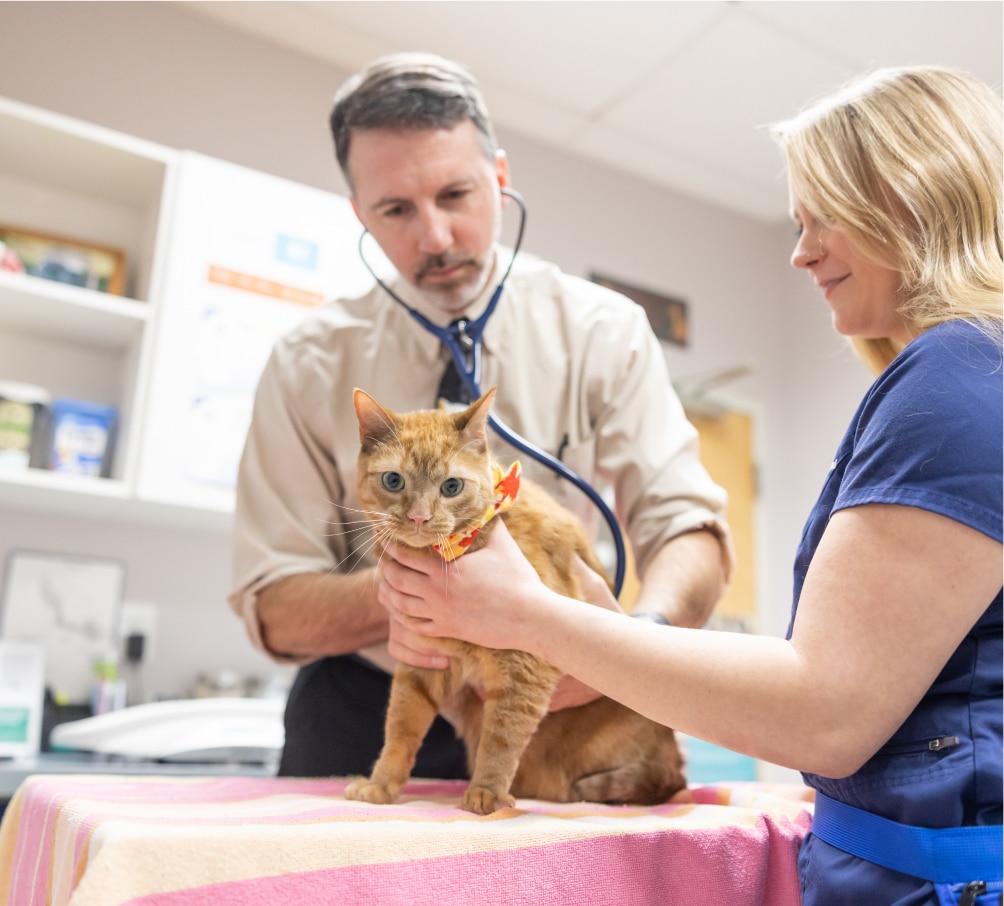Moving into a new home is a big change for anyone, but for cats it can be especially stressful. Unlike dogs, cats tend to form strong attachments to their environments. A change in surroundings can leave them feeling anxious, confused, and even fearful. We understand how important it is to make this transition as smooth as possible for your feline friend. Here are some expert tips to help your cat adjust to a new home or environment.
Prepare Your New Home for Your Cat
Before your cat sets paw in the new space, do a little prep work. Make sure windows and screens are secure, cords and plants are out of reach, and there are no small spaces where a nervous kitty could get stuck. Choose a quiet room to start, preferably one with a door you can close. This room will serve as your cat’s safe haven while they acclimate to the new surroundings. Set it up with all the essentials: litter box, food and water, a cozy bed, and a few favorite toys. This creates a comforting, familiar environment to begin the transition.
Minimize Stress During the Move
Moving day can be chaotic, and cats are sensitive to loud noises and sudden activity. Keep your cat in a calm, secure place, either a closed room or their carrier, until you’re ready to transport them. Use a well-ventilated carrier lined with soft bedding, and cover it with a towel to reduce visual stress. Once you arrive at the new home, place the carrier in their designated safe room. Open the carrier door and let them come out on their own terms.
Use Familiar Scents and Items
Cats are comforted by familiar smells. Bring along their usual bedding, scratching post, toys, or even a blanket with your scent on it. These items can help ease the transition and provide a sense of security in a strange new place. You can also try using feline pheromone diffusers or sprays, like Feliway, which mimic natural calming scents.
Introduce the New Environment Gradually
Once your cat seems comfortable in their safe room – usually after a few days – you can begin to introduce them to the rest of the house. Let them explore slowly and at their own pace. Make sure doors and windows are secure, and avoid overwhelming them with too many people or other pets right away. Keep feeding times consistent and give plenty of affection and attention, but also let your cat retreat if they need space.
Monitor Your Cat’s Behavior and Health
It’s normal for cats to hide, eat less, or act cautiously during the first few days. However, if your cat isn’t eating at all, shows signs of illness, or seems overly distressed, it’s time to call your veterinarian. At Old Farm Veterinary Hospital, we’re here to help you keep your cat happy and healthy during life’s transitions. Whether you’re moving across town or across the country, our team can offer guidance and support to make the process easier for both you and your feline companion. Don’t hesitate to contact us when you need help!



